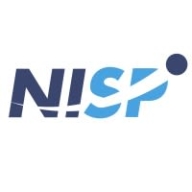

Azure Virtual Desktop and NICE DCV compete in the desktop virtualization segment. Azure Virtual Desktop holds an edge due to its seamless integration with other Microsoft services, while NICE DCV's superior performance and graphics capabilities make it more appealing for industries with those specific needs.
Features: Azure Virtual Desktop provides seamless integration within Microsoft's cloud ecosystem, driving effective collaboration and scalability. Its pricing advantages and expansive support enhance user experience. NICE DCV delivers high-quality graphics and efficient bandwidth consumption. It maintains an edge in high-performance scenarios demanding robust graphics capabilities and advanced performance metrics.
Ease of Deployment and Customer Service: Azure Virtual Desktop offers easy deployment facilitated by comprehensive support from Microsoft's Azure platform and extensive documentation. It excels in ease-of-use within its ecosystem. NICE DCV may require more technical expertise for setup but provides reliable performance with specialized customer service. This makes it beneficial for users seeking performance support tailored to specific high-performance graphic applications.
Pricing and ROI: Azure Virtual Desktop delivers flexible, cost-effective pricing options which boost return on investment through bundled services, benefiting organizations mainly using the Azure cloud. In comparison, NICE DCV's pricing requires a considerable initial investment, supported by its long-term performance benefits in graphics-intensive environments. Users focusing on value from advanced graphical performance might find the higher upfront costs justified over time.

| Company Size | Count |
|---|---|
| Small Business | 6 |
| Large Enterprise | 6 |
Azure Virtual Desktop enables scalable remote work with integration to Microsoft 365, enhancing collaboration and productivity. It offers secure access to desktops from anywhere, supported by features such as automation tools and robust security measures.
Azure Virtual Desktop is a powerful cloud-based platform facilitating remote work, disaster recovery, and secure access to applications. It supports multiple users, allowing efficient management of host pools and provides flexibility for consultants and contractors. Challenges include unpredictable costs and the need for improved scalability, better application delivery, and seamless transition from Windows 10 to 11. While it boosts hybrid work capabilities, further enhancements in intelligent scaling and integration with proxies are needed. Organizations use it for development, ensuring data security and management simplicity, but seek dynamic auto-scaling and cost optimization.
What are the key features of Azure Virtual Desktop?Azure Virtual Desktop is widely implemented across industries like technology, consulting, and finance. Firms utilize it for secure remote work, offering access to applications and data while maintaining stringent security protocols. It is particularly beneficial in scenarios requiring disaster recovery and seamless multi-session capabilities for globally dispersed teams.
NICE DCV is a secure, high-performance remote display protocol designed to optimize graphic-intensive applications and virtual desktop environments in cloud and on-premises settings.
NICE DCV empowers businesses to efficiently stream graphics-intensive applications, ensuring seamless performance and security. Tailored for dynamic environments, it supports both cloud and on-premises deployments, offering a range of features designed to enhance user efficiency. This solution facilitates the delivery of 3D design, engineering, and scientific applications, providing a robust infrastructure suitable for industries with demanding computational requirements.
What are the key features of NICE DCV?Industries such as engineering, oil and gas, and media leverage NICE DCV for its ability to stream complex 3D designs and simulations effectively. It is particularly beneficial in sectors that require powerful graphics capabilities remotely, allowing professionals to work regardless of their physical location.
We monitor all Virtual Desktop Infrastructure (VDI) reviews to prevent fraudulent reviews and keep review quality high. We do not post reviews by company employees or direct competitors. We validate each review for authenticity via cross-reference with LinkedIn, and personal follow-up with the reviewer when necessary.